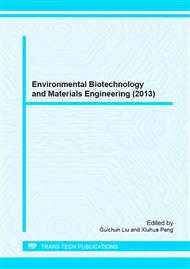p.3
p.11
p.15
p.19
p.26
p.33
p.38
p.43
Thermooxidative Aging Studies on Silicone Rubber and Lifetime Prediction
Abstract:
Silicone rubber have been aged in air while under 25% compression at temperature up to 250°C. These studies examined the compression set of silicone rubber at accelerated (elevated) temperatures and were then used to make predictions about compression set at room temperature. The data obtained could be amenable to timetemperature superposition and Arrhenius treatment. The results suggest the presence of two degradation processes with activation energies of 71.6 kJ mol-1 (for temperatures above 165 °C) and 26.08 kJ mol-1 (for temperatures below 165 °C). Based on the extrapolation of the non-Arrhenius behavior, it was estimated that significant compression set loss would occur after around 67 years at 25 °C.
Info:
Periodical:
Pages:
11-14
Citation:
Online since:
September 2013
Authors:
Price:
Сopyright:
© 2013 Trans Tech Publications Ltd. All Rights Reserved
Share:
Citation:


